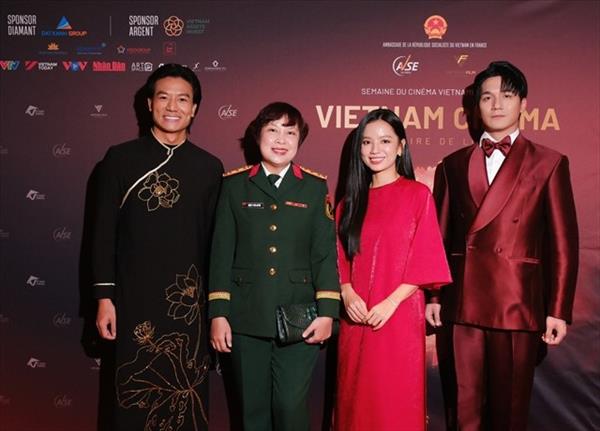In the so-called golden age, folk paintings were created to meet citizen’s spiritual demands, with acclaimed products and styles based in craft villages such as Dong Ho and Sinh. The variety of models, genres, themes and patterns detailed the lives of Vietnamese people.
They provided illustrations of the simple things that happen in everyday life, such as farming, herding, handicraft work and family life.
The uniqueness of folk art is enhanced by its combination with poetry, folk songs, proverbs written in Nom (ancient Vietnamese writing system), messages on moral codes and religion, or workers dreams for well-being, an adequate family and an equal society.
Folk paintings not only reflect people’s lives, but also record the fast changes of the nation through many periods of time, and the reaction to Western culture. Its simplicity has influenced generations of Vietnamese art lovers and foreign visitors.
Once an invaluable resource of the Vietnamese people, the old art is losing ground rapidly.
“Hanging folk painting in the house for Tet (Lunar New Year) used to be an elegant hobby, a beautiful custom of old Hanoi. However, at present, to be able to buy an authentic Dong Ho folk painting on the pavements of the city’s streets is mission impossible, or, if there are available, the techniques and aesthetic features are often poor," said chairman of the Vietnam Association of History Science (VAHS) Phan Huy Le.
Therefore, a group of young Vietnamese, named "SRiver", has been formed to conserve folk painting lines, especially paintings in the Hang Trong style.
The group consists of young people working in different jobs but sharing the same passion for fine art designs and Vietnamese culture.
The age of the group ranging from 23 to 33. Half of them are graphic designers.
Trinh Thu Trang, architect and founder of the group, said it set out to save traditional values. “As the ones who are passionate for Hang Trong paintings and folk beauty, we gathered together to form SRiver. Our first brainchild Hoa Sac Viet (Colours and Patterns of Vietnam) was made to reserve and uphold traditional values.
"We do not try to attach the paintings to modern life or try to cling onto something that belongs to history. What we are trying to do is select folk material that has potential to be applied to modern life, including graphic fashion and interior design. This is how we hope to revive folk values so they do not sleep permanently in museums.”
Hang Trong is a genre of prints made from woodblocks that originated in Hang Trong and Hang Non streets in downtown Hanoi. In the past, the art was an essential element of the Tet holiday in the capital, but today this tradition has almost disappeared.
For SRiver, this first and big venture is based on the potential of Hang Trong art painting in particular and Vietnamese fine arts in general by collecting, analysing and copying it into a source of rich natural colours and patterns for designers and painters. They will be able to create designs for all purposes, from curtains and bed sheets and even clothing.
The idea is expounded in a book entitled Hoa Sac Viet.
“Our hindrance was the lack of sources. Folk painting is a dying art and it is hard to find some materials on the market, so we looked for them in places like Japan and South Korea. We also studied the last craftsmen, such as Le Dinh Nghien and researcher Phan Ngoc Khue.
Nghien has 70 Hang Trong paintings so we borrowed his precious collection to copy digitally into our book. The process was made entirely by computer, and we used Illustrator software to digitalise the colour and patterns of the original paintings,” said Trinh Hong Van, a member of the team.
At present, SRiver is calling for supports on Comicola website so it can complete the project on scheduled time.
“Culture is like a flow and each one of us is a drop of water. Many drops moving in the same direction create a flow. If we feel Vietnamese culture is just a small part of this big world, let’s be creators. This is the spirit of SRiver,” Van said.
“When we started this project, we hoped we could inspire young people from all walks of life, so they also can initiate their own ideas to create projects relevant to the national folk culture,” she added.
The book will be published on March 31 of 2018.-VNA/VNP

















